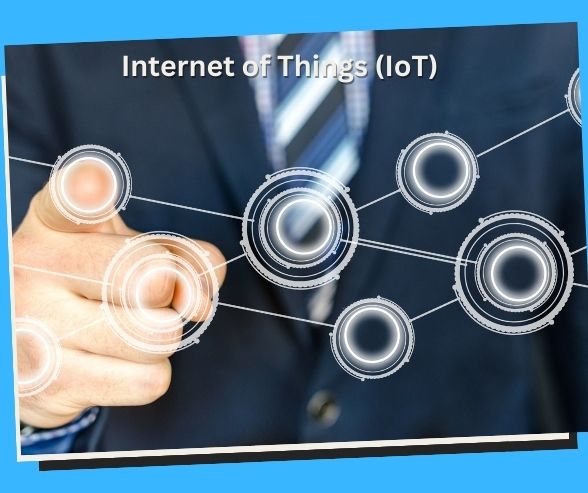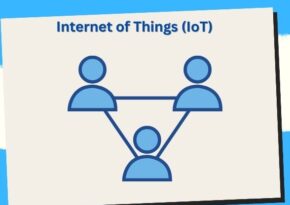
 Unveiling the Magic of Beamforming in 5G Networks!
Unveiling the Magic of Beamforming in 5G Networks! 
Discover the transformative power of beamforming in 5G networks! 

 The Spectrum Wars: Allocating Frequencies for 5G
The Spectrum Wars: Allocating Frequencies for 5G 

The future of connectivity is unfolding before our eyes, and at the heart of this digital revolution lies the battle for spectrum frequencies. This article delves deep into the complex world of spectrum allocation for 5G technology, exploring the challenges, strategies, and implications of this high-stakes spectrum war.

Before we dive into the intricacies of spectrum allocation, let’s grasp the enormity of 5G technology.
Fifth-generation wireless technology, or 5G, is not merely an upgrade; it’s a seismic shift in connectivity. It promises lightning-fast speeds, near-zero latency, and the capacity to connect billions of devices simultaneously. However, 5G networks require a substantial chunk of the radio spectrum to deliver on these promises.

- Speed: Download speeds up to 100 times faster than 4G.
- Latency: Near-zero latency for real-time applications.
- Capacity: Connect billions of devices per square kilometer.
- Reliability: Consistent, high-quality connections even in crowded areas.

The radio spectrum, often called the “airwaves,” is a finite and precious resource. It’s the invisible highway through which wireless signals travel, divided into various frequency bands. Different wireless technologies, from AM/FM radio to 4G LTE, occupy specific bands within this spectrum.
Allocating spectrum for 5G presents a unique challenge because the frequencies suitable for this technology are limited. These frequencies must be carefully managed and allocated to ensure efficient and interference-free use.

Spectrum allocation for 5G can be broadly categorized into three main frequency bands: low, mid, and high.
- Low Bands (Sub-6 GHz): These frequencies are below 6 GHz and offer excellent coverage and penetration, making them suitable for urban and rural areas. However, they have limited bandwidth, so they may not deliver the ultra-fast speeds promised by 5G.
- Midbands (6-24 GHz): Midband frequencies balance coverage and capacity. They provide decent coverage while offering significantly higher speeds than low bands. The 3.5 GHz band, often called the “Goldilocks” band, is a prime example of a midband used for 5G.
- High Bands (Above 24 GHz): Also known as millimeter-wave (mmWave) frequencies, high bands offer immense bandwidth and blazing-fast speeds. However, they suffer from limited coverage and poor penetration, making them more suitable for urban environments and hotspot areas.

Now, let’s explore the strategies and approaches employed in the spectrum allocation process:
A. Auctions and Licensing
Many countries use auctions to allocate spectrum licenses. Wireless carriers bid for licenses in specific frequency bands; the highest bidder wins the right to use those frequencies. Auctions generate substantial revenue for governments and encourage efficient spectrum utilization.
B. Sharing and Unlicensed Bands
Sometimes, spectrum is shared between multiple users or available in unlicensed bands. This approach promotes innovation and allows technologies like Wi-Fi to thrive in unlicensed frequency bands.
C. Spectrum Refarming
Spectrum refarming involves repurposing existing frequencies previously allocated for older technologies like 2G or 3G for 5G networks. This maximizes the utility of the spectrum without the need for additional auctions.

Spectrum allocation isn’t just a domestic affair; it’s a global chessboard where countries and regions coordinate to harmonize frequencies for 5G. Organizations like the International Telecommunication Union (ITU) play a vital role in developing international frameworks for spectrum allocation to ensure interoperability and global roaming.

Spectrum auctions have become epic showdowns in the telecommunications industry. Wireless carriers, tech giants, and infrastructure companies bid billions of dollars to access valuable frequency bands. These auctions are not just about bandwidth but about securing a competitive edge in the 5G race.
One of the most notable spectrum auctions in recent memory occurred in the United States. The 600 MHz auction in 2017, known as the “600 MHz incentive auction,” raised over $19 billion and reshaped the wireless landscape. Major carriers like Verizon, AT&T, and T-Mobile secured spectrum licenses to bolster their 5G networks.

Spectrum allocation for 5G is not without its share of challenges and controversies:
- Interference: Allocating frequencies too close to each other can lead to interference, degrading the quality of wireless connections. Careful coordination is required to prevent interference issues.
- Coverage vs. Capacity: Striking the right balance between coverage and capacity is a constant challenge. High-band frequencies offer incredible speeds but have limited coverage, while low bands provide wide coverage but with less capacity.
- Satellite and Weather Concerns: Some frequency bands used by 5G networks are adjacent to bands used by weather satellites, leading to concerns about potential interference and its impact on weather forecasting.
- Spectrum Scarcity: The demand for spectrum is growing exponentially, and spectrum scarcity is becoming a significant issue. This scarcity can drive up prices in auctions and limit access for smaller carriers.

As the spectrum wars rage on, the promise of 5G technology is slowly but surely being realized:
A. Gigabit Speeds Everywhere
With the right spectrum allocation, 5G has the potential to deliver gigabit speeds to urban and rural areas alike, revolutionizing everything from video streaming to remote work and telemedicine.
B. Enhanced IoT Connectivity
5G’s capacity for massive device connectivity is crucial for the Internet of Things (IoT). Smart cities, industrial automation, and connected homes rely on 5G to enable a seamless and interconnected world.
C. Autonomous Everything
Autonomous vehicles, drones, and robots depend on low-latency, high-bandwidth connections. 5G’s spectrum allocation enables these technologies to operate safely and efficiently.
D. Edge Computing
The edge computing revolution is powered by 5G, allowing data processing to occur closer to the source. This reduces latency and enhances real-time applications, from augmented reality to remote surgery.

In conclusion, the spectrum wars are a testament to the critical role of spectrum allocation in the 5G era. It’s a high-stakes battle with profound implications for our digital future.
As governments, regulators, and telecommunications companies navigate the complexities of spectrum allocation, one thing is sure: the promise of 5G technology is on the horizon. It’s a future where connectivity knows no bounds, where innovations like autonomous vehicles, smart cities, and telemedicine become a seamless part of our daily lives.
So, whether you’re streaming 4K videos in the middle of a bustling city, experiencing the wonders of augmented reality, or relying on autonomous vehicles for your daily commute, remember that the spectrum wars are shaping the digital world in which we live, work, and play.
Related Queries
The Role of Beamforming in 5G Networks
Boosting 5G Speeds with Beamforming
5G Revolution: Unleashing Beamforming
Supercharge Your 5G Experience with Beamforming
Beamforming’s Impact on 5G Networks
Wireless Tech Breakthrough: Beamforming Explained
The Science Behind 5G’s Speed: Beamforming Unveiled
Future-Proofing Connectivity: The Crucial Role of Beamforming in 5G
Save/Share this story with QR CODE
Disclaimer
This article is for informational purposes only and does not constitute endorsement of any specific technologies or methodologies and financial advice or endorsement of any specific products or services.
 Need to get in touch?
Need to get in touch?

We appreciate your reading. 
1.) 

Your DONATION will be used to fund and maintain NEXTGENDAY.com
Subscribers in the Philippines can make donations to mobile number 0917 906 3081, thru GCash.
3.) 
4.) 
AFFILIATE PARTNERS

World Class Nutritional Supplements - Buy Highest Quality Products, Purest Most Healthy Ingredients, Direct to your Door! Up to 90% OFF.
Join LiveGood Today - A company created to satisfy the world's most demanding leaders and entrepreneurs, with the best compensation plan today.

 Business, Finance & Technology
Business, Finance & Technology














 Improve Logistics Efficiency: How IoT Sensors Transform Supply Chain Management
Improve Logistics Efficiency: How IoT Sensors Transform Supply Chain Management 




 Blockchain Basics: A Simple Guide to the World of Distributed Ledgers!
Blockchain Basics: A Simple Guide to the World of Distributed Ledgers! 
 Decode the workings of blockchain – understand the magic […]
Decode the workings of blockchain – understand the magic […]